AMD Kaveri Review: A8-7600 and A10-7850K Tested
by Ian Cutress & Rahul Garg on January 14, 2014 8:00 AM ESTDrawing Performance Conclusions
As I progressed through the testing for this review, I became aware of trends in two things: absolute performance, in terms of numbers, and generational improvements across platforms. With AMD moving the Bulldozer based architectures from Piledriver in Trinity and Richland to Steamroller in Kaveri, the base CPU design has had a relatively long run in order to be optimized to the limitations on the CPU side. Obviously AMD has also had a chance to change the lithography node in there as well, and as such has optimized for design rather than performance. This matters a great deal when we look at the power banding (45W, 65W, 95W) and performance in each segment.
In order to display just how much Kaveri has grown in relation to the previous generations, I processed our mountain of data to show graphs where percentage gain against the older generations really does matter. As mentioned previously in this review, it all depends on whether the software can take advantage of the new features afforded by the architecture. In this review we have spent a lot of time discussing advantages for Kaveri in terms of compute (HSA, hUMA, hQ) and gaming (Mantle, TrueAudio), but some of these are still a little way off for software integration. So what does that translate to if you are looking for an APU today – does Kaveri still expand its wings with the integration of the GCN architecture, or does it lag behind due to the lithography node no longer being optimized for frequency. The proof is in the results.
IGP Gaming, 1280x1024
For the 100W APUs at 1280x1024, there is almost no movement between the Richland and the Kaveri APUs, except for Company of Heroes which would seem to leverage the extra SPs more than the MHz available.
45W APUs are clearly in vogue at 1280x1024, each of them providing a good bump over Richland.
IGP Gaming, 1680x1050
1680x1050 sees more benefit for the 100W APUs, but the 45W APUs still show big leaps.
IGP Gaming, 1920x1080
At 1080p the effects are more pronounced all around.
CPU Timed Benchmarks
Unfortunately the CPU timed benchmarks at 100W are bit over the place. Here we are dealing with an IPC gain but MHz deficit, and each benchmark has a different way of dealing with it. For Agisoft, MHz wins, but for Xilisoft, the Kaveri improvements work out well for the system.
At 45W the situation is a lot more clearer, and the newer APUs have the advantage, especially in Adobe After Effects.
CPU Score Benchmarks
45W still makes the biggest jump when it comes to score based CPU benchmarks.
IGP Synthetics
I never like putting much thought into the synthetic results – here both the 100W and the 45W range are showing good improvements all around. 3DMark 06 has the most trouble getting improvements as it relies more on the grunt, rather than the features that Kaveri affords.
IGP Compute
Off the bat we can see just how much of a difference the Kaveri GPU Compute can make over previous APUs. This is still without hUMA fully being in effect while we wait for a proper driver and software stack to become available.
Up to a +222% boost from Kaveri is amazing for a 45W part.
AMD vs Intel
For a little tete-a-tete, putting the 65W Iris Pro up against the 65W Kaveri seems like a good idea. To add to the mix, due to the extreme price difference of Iris Pro in this equation, we also add the 95 W Kaveri for comparison.
It is interesting to note that at the lower resolutions the Iris Pro wins on most benchmarks, but when the resolution and complexity is turned up, especially in Sleeping Dogs, the Kaveri APUs are in the lead.


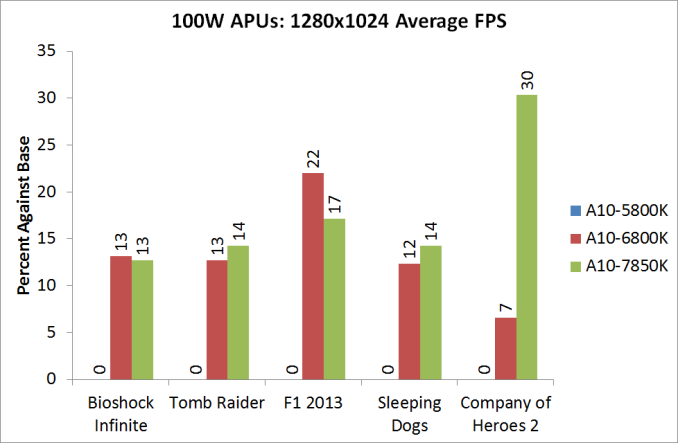
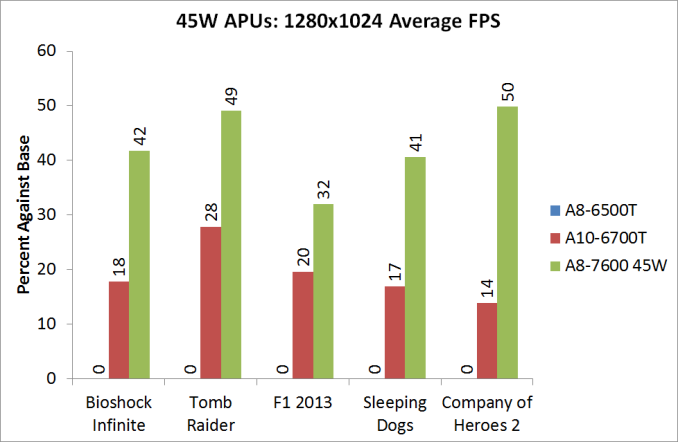
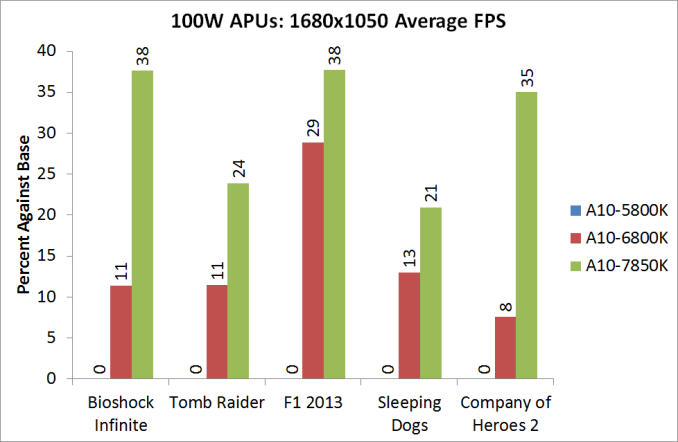
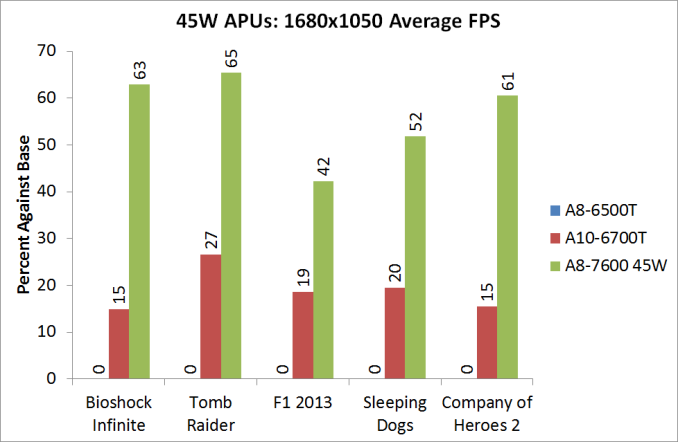
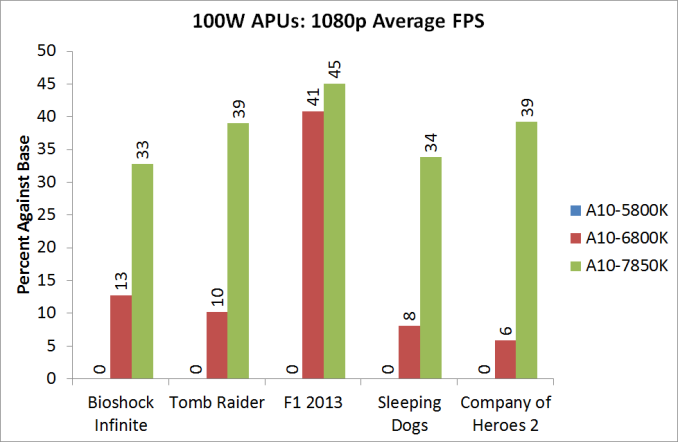

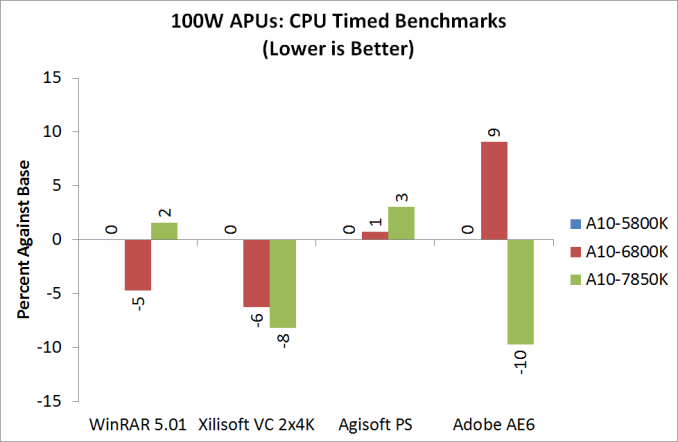
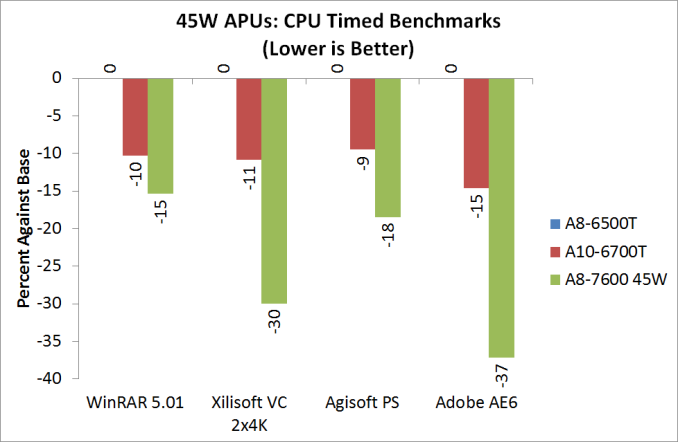

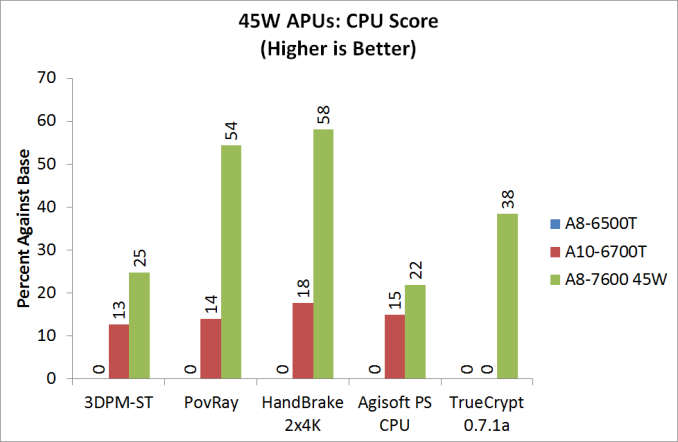
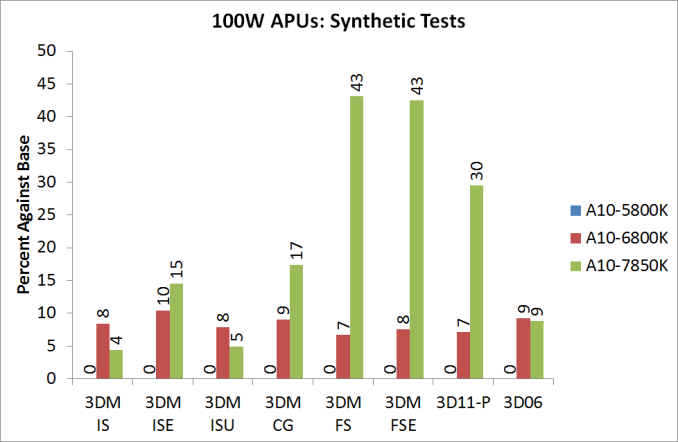
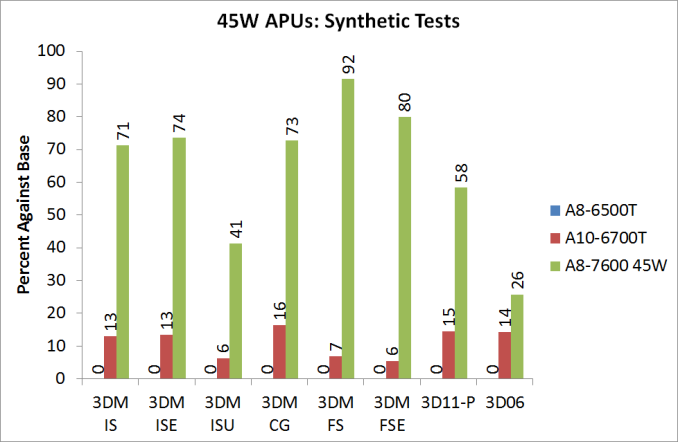
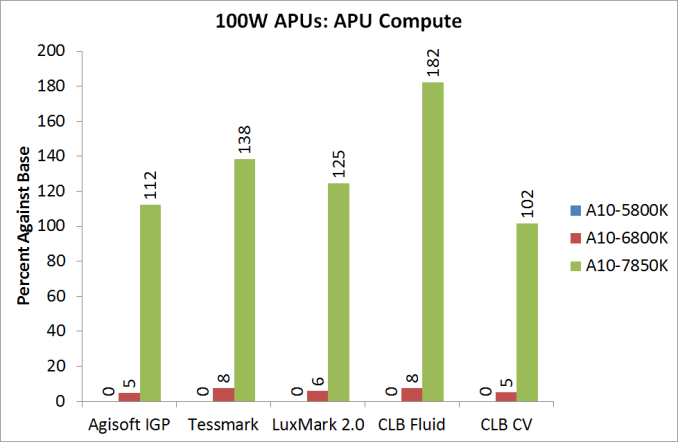

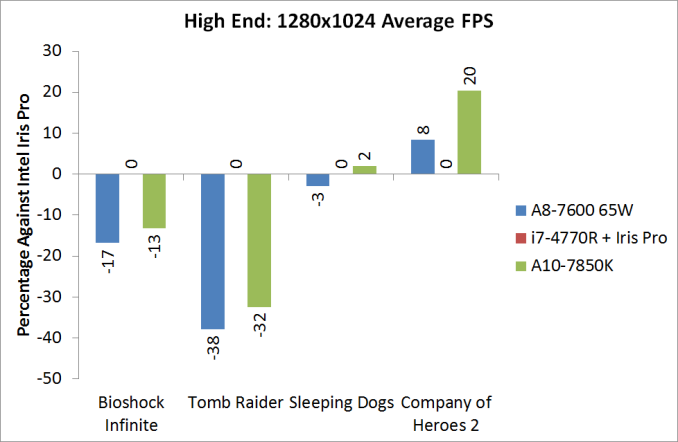
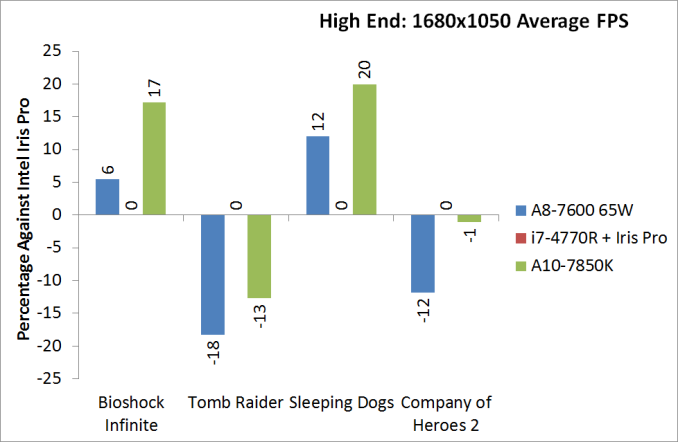
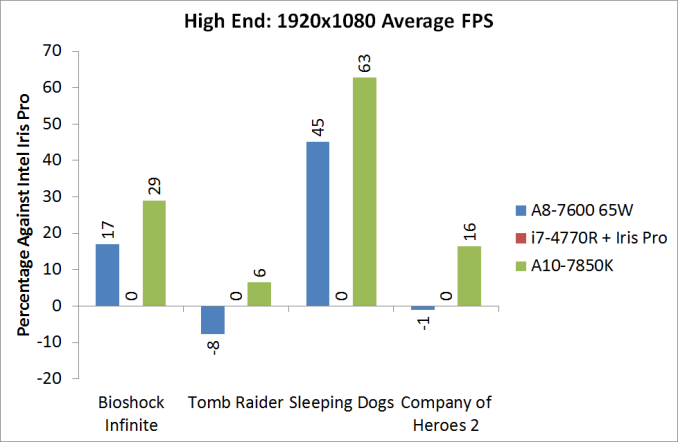








380 Comments
View All Comments
Calinou__ - Saturday, January 25, 2014 - link
The consoles use lower level APIs, way more optimized.dsmogor - Friday, January 24, 2014 - link
From a distance the Amd architecture actually looks a lot like PS3 Cell SOC: number of CPU cores + VLIV modules that access the same bus and memory. If the GPU cores have some sort of manageable local memory (dunno) I clearly see why Sony have choosen that for their next gen.Houdhaifa - Saturday, January 25, 2014 - link
nice performanceTheyear - Sunday, January 26, 2014 - link
hixtremesv - Tuesday, January 28, 2014 - link
I'd rather give your grandpa a FX-4300 + GT640 GDDR5 roughly for the same price as A10-7850K and even better, for $20 more you ditch the FX-4300 for a FX-8120.thomascheng - Tuesday, January 28, 2014 - link
You can get the 7850K from Microcenter for 129.00 right now, its only for a limited time. I think I'll bite at the price point.neal.a.nelson - Tuesday, January 28, 2014 - link
No, that's the 6800K. The 7850K isn't even on the main AMD page.The AMD A10-7700K Unlocked Black Edition
10 Computer Cores (4 CPU + 6 GPU)
Features AMD Radeon™ R7 Graphics
AMD TrueAudio Technology for immersive audio 9
AMD A10-7700K
$159.99
REG. $179.99 045013
Buy Now!
BUNDLE & SAVE!
AMD A10-6800K
$129.99
REG. $159.99 617795
Buy Now!
BUNDLE & SAVE!
rrgg - Sunday, February 2, 2014 - link
Is there a stated release date for the A8-7600 (Kaveri)? I know it was pushed out but to when? Thanks.Novaguy - Wednesday, February 12, 2014 - link
Hmmm, any news about the a8-7600 availability? Or mobile parts?What I am really curious about is the performance of a kaveri a8 + r9-290m (aka 7970m/8970m rebadge) in a laptop (such as the msi model that was reviewed on anandtech). Will that get of the frame throttling that was going on in that msi laptop?
DoctorBurp - Thursday, February 20, 2014 - link
It is interesting to see how computers involved into having two “brains”: The CPU which works sequentially and is generally better with small amount of data, and the GPU which works parallel and is generally better with large amount of data.Us humans also tend to have two ways of thinking, and to demonstrate it let us talk about decisions making. When dealing with small amount of information we tend to take the sequential route: We investigate, write notes , explorer in depth and operate in a step by step manner it order to make the right choice. However when dealing with large amount of information it is impossible to remember each and every detail and investigating turns to be a tedious work. This is when we turn to our gut feeling, our intuition, and at the end make a decision because it “feels right”. This feeling is a result of a processing which took place backstage in areas like our sub subconscious, which as far as we know it works in a parallel way.
Since computers have been invented by humans, and for the most part reflect the way WE think, it is not surprising to find these similarities. I for instance find it fascinating and funny at the same time :) Maybe by trying to imitate the way we think we will end up understanding our self better…
Just thought of sharing it with you all.